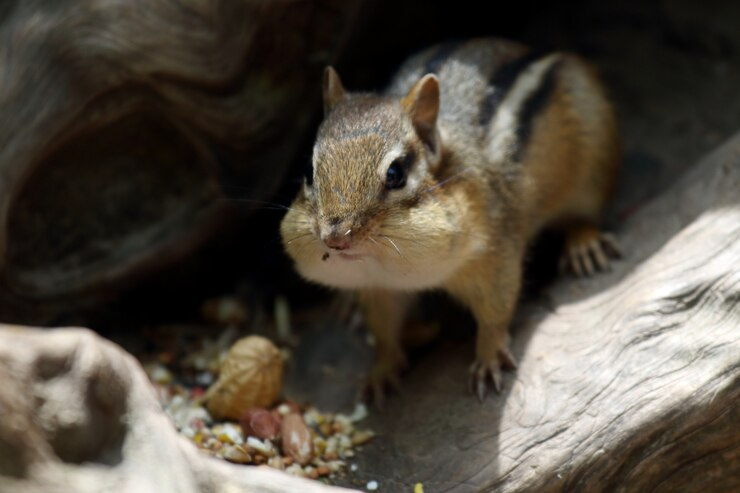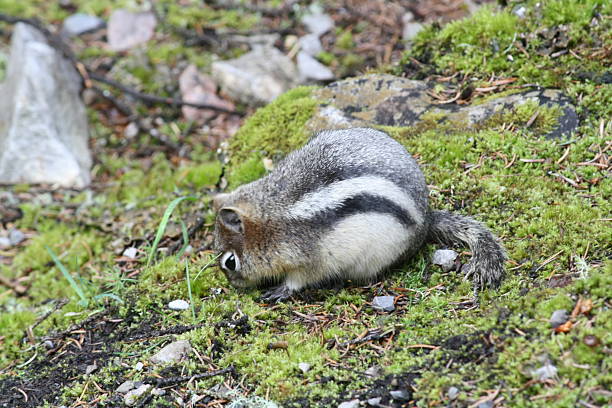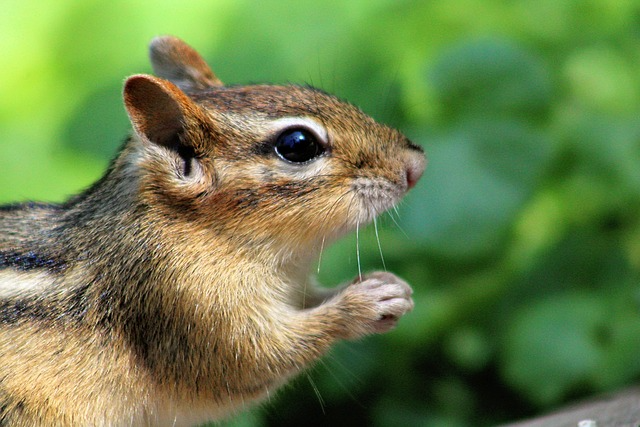Table of Contents
Scientific Classification
| Kingdom | Animalia |
| Phylum | Chordata |
| Class | Mammalia |
| Order | Rodentia |
| Family | Sciuridae |
| Genus | Neotamias |
| Species | Neotamias alpinus |
| Scientific Name | Neotamias alpinus |
Description
The Alpine Chipmunk (Neotamias alpinus) is a small and agile rodent that thrives in high-altitude regions. This chipmunk features a slender body, a bushy tail, and distinctive stripes on its back. It is perfectly adapted to the rugged mountain terrain. Its fur is a reddish-brown color, adorned with dark and light stripes that provide excellent camouflage among the rocks. Although the Alpine Chipmunk is petite, it is a resilient and resourceful survivor in the challenging alpine landscape.

Distribution
The Alpine Chipmunk is native to the Sierra Nevada mountain range in California, USA. This chipmunk is different from others. It lives only in high-elevation areas above the tree line. This makes it a specialist species with a narrow range. Its habitat is facing more threats from climate change. This change shifts temperature patterns and alters its living environment.
Habitat
The Alpine Chipmunk thrives in high-altitude environments, typically found in:
Rocky outcrops – These areas offer shelter and protection from predators.
Subalpine forests – While uncommon, some populations can be found in sparse woodland regions.
Meadows and tundra – These habitats provide plenty of food sources during the warmer months.
Glacial valleys – These areas present a mix of vegetation and shelter.
The Alpine Chipmunk has a preferred habitat, but due to rising temperatures, it is forced to migrate to higher elevations. This shift creates challenges for the chipmunk.
Diet
The Alpine Chipmunk is an omnivore that eats a wide range of foods to meet its nutritional needs:
Seeds and nuts – These are the main food sources, offering vital energy.
Berries and fruits – Seasonal options that provide important vitamins and hydration.
Insects and small invertebrates – These contribute protein to its diet.
Plant shoots and fungi – These help to diversify its food intake.
Throughout the brief summer season, it forages diligently to gather food for the challenging winter months.

Behavior
The Alpine Chipmunk has many interesting behaviours, making it a fun topic to study:
Solitary Lifestyle – This chipmunk is mostly solitary, unlike some other species. They only come together during mating season.
Hibernation – While it does not fully hibernate, it enters a state of torpor to conserve energy.
Food Hoarding – Gathers and stores food in underground caches to survive the winter.
Keen Senses – Uses sharp eyesight and hearing to detect predators and food sources.
Vocal Communication – Emits high-pitched alarm calls to warn against danger.
Lifespan
In the wild, the Alpine Chipmunk typically lives for about 3 to 5 years. However, in captivity, where there are fewer threats, it can enjoy a longer lifespan.
Reproduction and Lifecycle
Alpine Chipmunks typically breed during late spring and early summer, with this reproductive cycle occurring seasonally.
Mating Season – Generally occurs between May and June.
Gestation Period – Lasts about 30 days.
Litter Size – Usually consists of 2 to 5 pups per litter.
Parental Care – Mothers care for and protect their young until they are able to stand independently.
Juvenile Development – Young chipmunks mature in roughly 8 to 10 weeks.
Since Alpine Chipmunks inhabit high-altitude areas, their breeding season is shorter compared to chipmunks found in lower elevations.

Predators
The Alpine Chipmunk, despite its agility and small size, encounters various predators:
Birds of prey – Owls and hawks often hunt them from the sky.
Carnivorous mammals – Foxes, weasels, and coyotes may opportunistically pursue them.
Snakes – Certain snake species prey on young or unsuspecting chipmunks.
Human Impact – Habitat loss and climate change can indirectly heighten predation risks.
To evade predators, the Alpine Chipmunk relies on its speed, camouflage, and clever hiding spots.
Adaptations
The Alpine Chipmunk has developed several impressive adaptations to thrive in its challenging environment:
Thick Fur Coat – Offers insulation against frigid temperatures.
Efficient Food Storage – Allows survival during winters when food is scarce.
Sharp Claws and Agile Movement – Facilitates climbing and maneuvering through rocky landscapes.
Torpor Mechanism – Aids in conserving energy during severe conditions.
High-altitude Lung Capacity – Optimized for oxygen efficiency in low-oxygen settings.
These adaptations contribute to its status as one of the most resilient rodents in high-altitude ecosystems.
Conservation Status
The Alpine Chipmunk is now listed as Near Threatened. This is mainly because of climate change and habitat loss. The primary threats include:
Rising Temperatures – Forcing the species to move higher up, reducing its livable range.
Habitat Fragmentation – Human activities impact its already limited habitat.
Food Scarcity – Changing climate conditions affect food availability.
Conservation Efforts:
Scientific Monitoring – Researchers keep an eye on population trends to evaluate potential risks.
Protected Areas – Conservation initiatives prioritize the preservation of high-altitude ecosystems.
Climate Change Mitigation – Strategies designed to combat global warming also provide indirect benefits to this species.
Public Awareness – Educational campaigns play a crucial role in promoting conservation initiatives.
Conclusion
The Alpine Chipmunk is an impressive rodent that thrives in the challenging alpine environment. However, climate change poses a significant threat to its survival. Therefore, conservation efforts are crucial for its continued existence. Safeguarding this remarkable species is essential for maintaining high-altitude biodiversity and the fragile ecosystems they inhabit.



